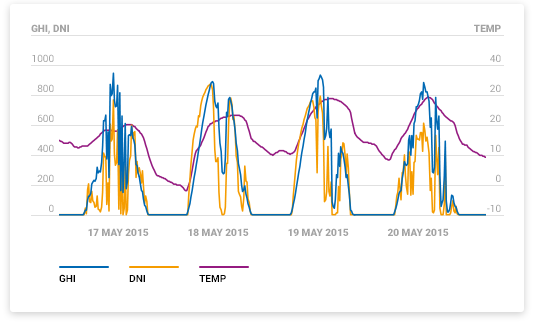For solar energy enthusiasts and professionals alike, understanding and leveraging Typical Meteorological Year (TMY) data can be a game-changer. TMY datasets provide invaluable insights into weather conditions, enabling more accurate solar energy predictions. In this article, we explore some life-changing tricks to make the most of TMY data and optimise solar energy systems.
1. Harnessing TMY for System Design:
The first trick involves using TMY data during the system design phase. TMY datasets provide a comprehensive overview of weather conditions over a typical year, helping designers optimise solar installations for specific locations. By incorporating TMY data, solar panels can be positioned and configured to capture the maximum amount of sunlight throughout the year, ensuring efficient energy production.
2. Fine-Tuning Energy Production Estimates:
TMY data tricks also come into play when estimating energy production. By analysing TMY datasets, enthusiasts can fine-tune their energy production estimates, accounting for seasonal variations and fluctuations in solar radiation. This accuracy is paramount for realistic expectations and effective energy management.
3. Optimising Tilt and Orientation:
Changing your life in the solar energy realm involves optimising the tilt and orientation of solar panels based on TMY data. TMY datasets provide insights into the angle at which sunlight strikes the Earth’s surface throughout the year. By adjusting the tilt and orientation of solar panels according to this data, enthusiasts can maximise energy capture and improve overall system efficiency.
4. Predicting Load Matching:
TMY data tricks extend to load matching – aligning energy consumption with solar energy availability. Analysing TMY datasets allows users to predict when energy demand will align with peak sunlight hours. This information enables better management of energy storage systems, ensuring stored energy is utilised effectively during periods of low solar radiation.
Implementing TMY Data Tricks:
Access Comprehensive TMY Datasets:
- Ensure you have access to comprehensive TMY datasets for your specific location. These datasets provide detailed information on solar radiation, temperature, and other meteorological parameters.
Use TMY Data in System Design Software:
- Integrate TMY data into system design software to visualise and optimise the placement and configuration of solar panels.
Regularly Update Energy Models:
- Incorporate TMY data into energy models and update them regularly to reflect changing weather patterns and seasonal variations.
Align Energy Consumption with Solar Availability:
- Predict load matching by aligning energy consumption patterns with TMY data on solar availability, optimising energy use.
Implement Resilience Strategies:
- Use TMY data to anticipate extreme weather conditions and implement resilience strategies to protect solar energy systems.

